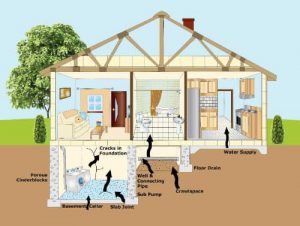
Some Alaska residents should consider re-testing their homes for radon after earthquake.
ANCHORAGE (January 15, 2019) – Radon is a naturally occurring gas that hides invisibly in homes and is the nation’s second-leading cause of lung cancer. January is National Radon Action Month, and several areas in Alaska have moderate radon levels, according to the Environmental Protection Agency.
Radon is found at dangerous levels in an estimated 1 in 15 homes nationwide. Whether or not you’re in a high-level area, your home could have elevated levels of radon while your neighbor’s home does not. Radon can enter homes or buildings through cracks in walls, basement floors, foundations and other openings.
Radon is an invisible, odorless, tasteless gas that causes lung cancer and claims an estimated 21,000 lives in the U.S. each year. This naturally-occurring gas leaks into homes from the ground and through spaces between the walls, floors, basements and foundations in buildings. Earthquake and seismic activity can affect radon levels in homes, so it’s recommended that you re-test your home for radon after the November 30th earthquake and aftershocks. Even if you’ve tested your home previously for radon, earthquake activity can affect radon levels and your home should be retested.
“Radon is radioactive and can cause lung cancer,” said Marge Stoneking, Executive Director of the American Lung Association in Alaska. “High levels of radon are found in many states, including Alaska. But testing for radon and reducing your risk is simple.”
Inexpensive radon testing kits can also be found at local hardware stores or online. A certified radon-testing professional can also perform testing. If dangerous levels of radon are found, homeowners can install a radon mitigation system, for about the same price as a large television screen, to decrease the risk of harmful exposure.
To learn more about radon and how to test homes, visit Lung.org/radon or call the toll-free Lung HelpLine at 1-800-LUNGUSA.
